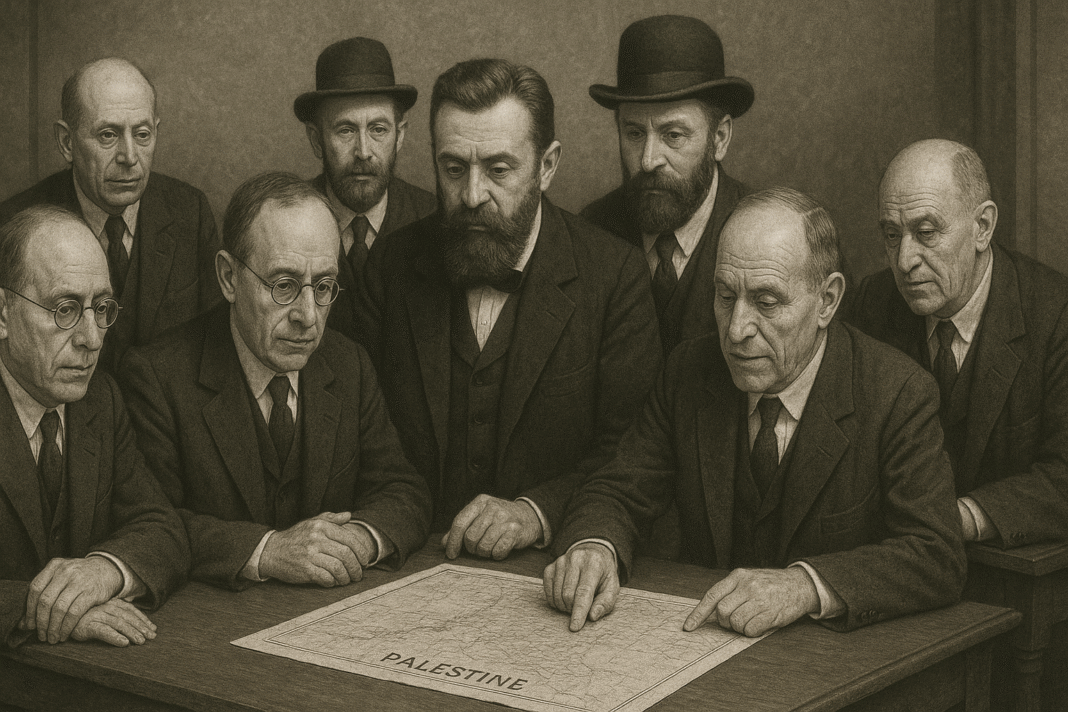Historical Overview: How Israel was Created on Palestinian Land
Late 19th and Early 20th Century: Zionism Emerges
In the late 1800s, Zionism—a movement advocating for a Jewish homeland—emerged in Europe in response to widespread anti-Semitism. Zionist leaders identified Palestine, then part of the Ottoman Empire, as the desired homeland due to its historical and religious significance to Judaism.
British Mandate and the Balfour Declaration (1917)
After the Ottoman Empire’s collapse in World War I, Britain took control of Palestine under the League of Nations mandate. In 1917, Britain issued the Balfour Declaration, publicly supporting the establishment of a “national home for the Jewish people” in Palestine. This declaration significantly boosted Zionist immigration to the region, fueling tensions with the indigenous Palestinian Arab population.
Jewish Immigration and Palestinian Response (1920s–1940s)
From the 1920s through the 1940s, significant numbers of Jewish immigrants arrived in Palestine, facilitated by British rule. As Jewish communities grew, tensions escalated. Palestinian Arabs, alarmed by displacement and growing Jewish settlements, engaged in protests and uprisings (notably the Arab Revolt of 1936–1939). British authorities often violently suppressed these uprisings, further fueling resentment.
United Nations Partition Plan (1947)
Post-World War II, Britain sought to exit Palestine due to rising tensions and international pressure. The newly-formed United Nations proposed a partition plan (Resolution 181) in 1947, suggesting the creation of separate Jewish and Arab states. While Jewish leaders accepted the plan, Arab leaders strongly rejected it, considering it unjust to divide their ancestral lands.
Nakba and Creation of Israel (1948)
On May 14, 1948, Britain officially withdrew, and Jewish leaders proclaimed the establishment of Israel. The next day, surrounding Arab states launched military action, leading to the first Arab-Israeli war. Israel emerged victorious, controlling 78% of historic Palestine—significantly more land than allocated by the UN plan.
This period marked the Nakba (“Catastrophe”) for Palestinians. Over 700,000 Palestinians were expelled or fled their homes, becoming refugees. Hundreds of Palestinian villages and towns were destroyed or repopulated with Jewish settlers.
Occupation and Further Conflict (1967 and beyond)
In the Six-Day War of 1967, Israel occupied the remaining Palestinian territories—East Jerusalem, the West Bank, and Gaza Strip. These territories remain under varying levels of Israeli control today, marked by ongoing settlement construction, military occupation, checkpoints, and frequent conflicts.
Ongoing Struggle
The creation of Israel on Palestinian land has led to decades of conflict, displacement, and human rights concerns. Millions of Palestinians continue to advocate for their right to self-determination, demanding justice, sovereignty, and the right of refugees to return.
Understanding this history provides context for today’s continued tensions and emphasizes the need for a just resolution grounded in respect for Palestinian rights and international law.



